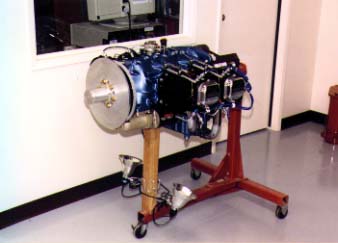Storing Engines
![]()
Storing Engines |
|
|
From "Construction Notes" Falco Builders Letter, March 1992 |
I've been getting a lot of questions recently about storing engines for a long period of time before putting them on your airplane. I quizzed Steve Wilkinson about this, because I remembered that he had done some research on the subject. Steve's method was suggested by a friend, and Mattituck said it made sense.
First, let's define the problem. The internal parts of the engine that are most susceptible to corrosion are the freshly machined surfaces. This includes the polished lobes of the cam shaft, the cylinder walls, and the main bearing surfaces of the crankshaft.
On the typical engine, the cylinder walls are a big concern. The freshly machined interior surfaces of the cylinders are very prone to corrosion until the engine is broken in. Once the engine is run for a while, the steel is coated with a varnish-like substance from the oil that protects it somewhat.
The typical protection against corrosion in the cylinders is to spray LPS-3 oil into the cylinders. LPS-3 is a medium-weight corrosion protection oil that comes in an aerosol can. It's much thicker than the WD-40 or Tri-Flo, and you can get it at shops that sell to machine shops. Call any local machine shop, and they can tell you where to get it.
The spark plugs are normally removed, and you install dehydrator plugs. These are things that screw into the spark plug hole and which hold a desiccant. The desiccant is simply a drying agent, which absorbs moisture from the air, thus preventing it from getting into the engine.
Most people pull the plugs out every couple of months, spray more LPS-3 into the cylinders and turn the engine over a couple of time to insure that the oil stays smeared over the cylinder walls. Steve said he didn't bother with this because his cylinders were Cermichrome cylinders, and there's no risk of the chromium corroding.
Now to protect the insides of the engine, Steve's friend suggested filling the engine with oil, as full as possible, with any kind of oil you can find-and then store the engine upside-down. This insures that the camshaft will remain covered with oil. If a little air space remains, then who cares if there's some corrosion on the inside of the oil sump? With the engine filled with oil and upside-down, the polished surfaces of the crankshaft, cam and the valve train are all bathed in oil.
Steve bought a bag of desiccant from somewhere (Aircraft Spruce? Edmund Scientific? He doesn't remember) and made a sock-like thing from a rag, filled it with desiccant and stuffed it into the intake manifold. Every couple of months, he'd take it out and put the desiccant in the microwave until it turned blue again. All the other openings were taped over.
The only other thing you have to be concerned about is to keep the engine out of areas that have strong humidity and temperature changes. In Steve's barn, for example, sometimes the tools on the wall would gather dew when the air warmed up in the morning after a cold night.

Craig Bransfield just took delivery on his engine from High Performance. Craig adapted an automotive engine stand by having four adapter brackets made up from 1-1/2" x 5/8" mild steel. After consulting with Al Hadaway of High Performance, they decided to use one pint STP oil treatment blended warm with each gallon of Aeroshell 80, and filled the engine up with this oil.
The combustion chambers were sprayed with LPS-3, and all opening were provided with either their assigned accessories or Lexan covers and soft gaskets (made from our shipping foam sheet). Al Hadaway's recommendation was to roll the entire engine over periodically, and also to turn the crankshaft, always leaving it 90° off from its last resting place.
Says Craig, "Also, I built a small plastic 'tent' with a square 1x2 frame and weather stripping on the bottom, to cover the engine on the stand. Then I clamped a couple of 100 watt shop lights to the stand aimed at the bottom of the engine, with a timer. This way, I can make sure the engine is always 10 degrees or so above the dew point during foggy nights and mornings. The tent's plastic is black, to take advantage of any free heat from the skylights. This gives the box a purposeful look, but most people who see it seem afraid to ask what that purpose might be."